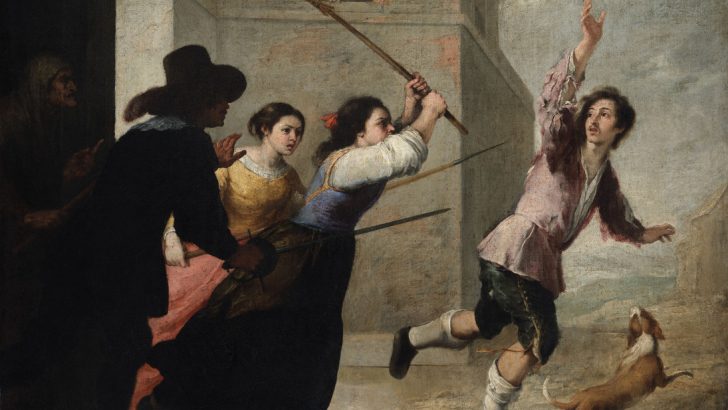Murillo: The Prodigal Son Restored
text by Aoife Brady and Muirne Lydon, with an introduction by Sean Rainbird (National Gallery of Ireland, €19.95)
Murillo: the Prodigal Son Restored
Exhibition, National Gallery of Ireland,
Hugh Lane Room (Room 31), runs to 30 August 2020. Free entry
The National Gallery since its foundation has been graced by a marvellous collection of Spanish paintings, many from the Golden Age of Spain in the 17th Century.
More recently, thanks to the gift of Sir Alfred Beit, the gallery came to hold a unique set of pictures by Bartolomé Esteban Murillo (1617-1682) illustrating the parable of the Prodigal Son. This strangely enough was the first set of its kind, and indeed may have helped to make that passage from the gospel of Luke (15: 11-32) a very familiar moral lesson in later centuries.
While the pictures were in the Beit collection at Russborough House they would be safely stored in the National Gallery at certain times of the year – a wise precaution given the raids on the house by gangsters and revolutionaries.
When they came into the collection permanently in 1987 they were found to be in need of restoration and this was undertaken. It is now completed and the astonishing work by the scholars and scientists at the National Gallery are now on view to the general public in the Hugh Lane Room on Merrion Square.
This book by Aoife Brady and Muirne Lydon, with contributions by others, gives a full history of the paintings, of their passage from collection to collection over the centuries, and of the intense, painstaking and lengthy conservation work done to restore and preserve the canvases.
Their text is enhanced by the photographs of both the paintings themselves and the years of conservation made by NGI staff photographer Roy Hewson who was present throughout to record the ‘dramatic transformation’ of the paintings during the conservation project.
Account
There is also a fascinating account of how Murillo went about his original and ground breaking task. He made inspirational use of images from other artists such as Durer and Cabot, as well as elements from the manner of production in contemporary Spanish drama, then passing through the glorious years of Lope de Vega and Calderon.
The paintings, in the usual manner of the Renaissance and Baroque, make no attempt at presenting the tales in their original Biblical setting. Rather the scenes are set in Murillo’s own Spain, making the lives of Jesus and the Apostles seem to move in such a contemporary landscape; this puzzles some today, but perhaps it also underlined for the 17th Century audience the “Roman” rather than the ‘Semitic’ nature of Christianity as then understood.
Interestingly, Murillo provides no image for the climax of the parable, which is the attitude of the older son. Envious, he refused to participate in the festivities. The father tells the older son “you are ever with me, and all that I have is yours, but thy younger brother was lost and now he is found”.
The saving of the lost son interests the painter, but this is not (so to speak) what had interested Jesus. The older son appears in Murillo’s last picture, but a scene with his father in the actual gospel conclusion seems called for. Could there have been a lost final canvas one wonder? But it seems not.
The essays on the individual paintings by the authors’ comment on this failure to finalise the parable, but cast no light on this notion of mine.
Murillo concludes with the reconciliation of the “lost prodigal”; but fails to deals with the appeasement of the older son. Is this a point, I wonder, which ever engaged those inquisitorial Spanish theologians of Murillo’s era. Could he have been accused of distorting the scriptures?
The catalogue fills out the background and the particular points of each picture in a very illuminating way, which adds very much to a deeper enjoyment of a unique show. Murillo became, in a way, over-familiar in the last two or three centuries, as these Spanish images often filled the walls of schools, convents and homes as the epitome of “holy pictures”.
Now we can see them both as images of devotion and meditation, as well as artefacts of an important historic era.
This is an exhibition which needs to be seen, but while in the gallery visitors might well seize the opportunity to enjoy the other Spanish paintings in the nearby rooms, many of which deal with religious themes.
Indeed to fully enjoy the collection visitors need to be well up on the scriptures!


 Peter Costello
Peter Costello Murillo's The Prodigal Son Driven out from a Bordello
Photo: National Gallery of Ireland
Murillo's The Prodigal Son Driven out from a Bordello
Photo: National Gallery of Ireland 